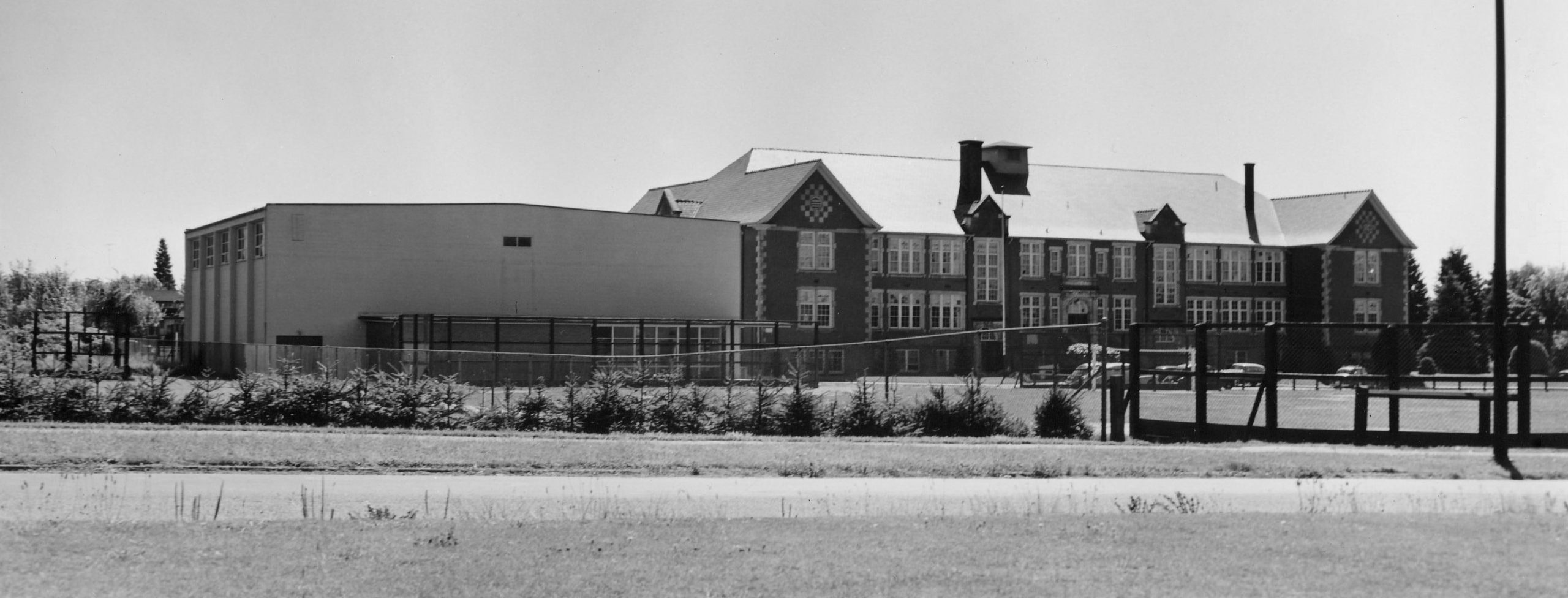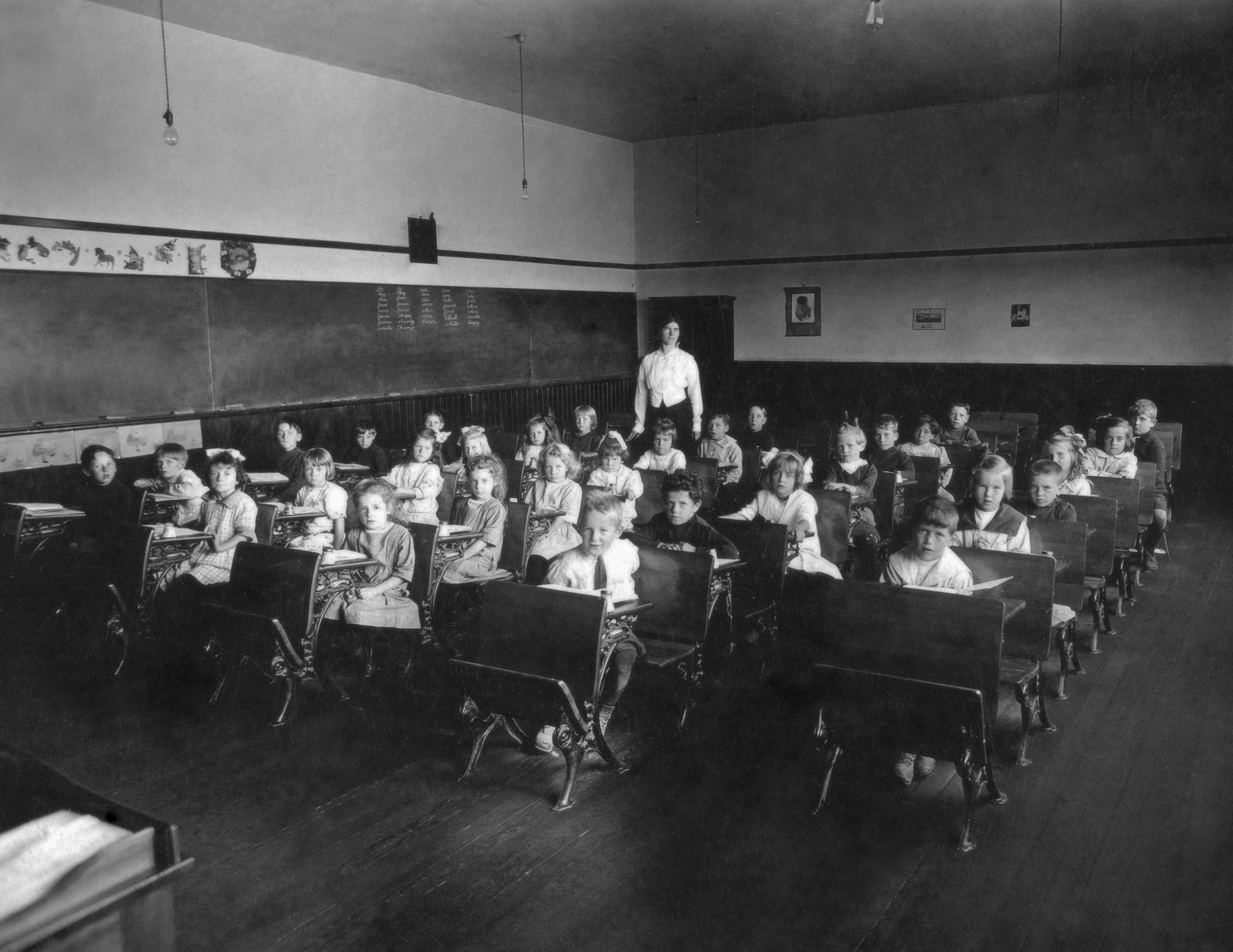HOW A VANCOUVER SCHOOL BOARD MOTION TO DECOMMISSION PRINCE OF WALES HIGH SCHOOL IN 1941 WAS NULLIFIED BY ITS PUPILS
by Oliver Matisz, a Grade Eight student attending Prince of Wales Secondary School (Sept 2021)
On Friday June 14, 1941, Prince of Wales School Principal, J.H Hall, stood solemnly before a full assembly of students gathered in the school auditorium and announced that the secondary portion of the school would close prior to the commencement of the next school year. The proclamation was met with a momentary hush, then broken “swiftly by a full-throated roar from over 200 young voices – a roar of indignation that their school should be forced to disintegrate.”
That evening, senior students massed on the front steps of the institution to denounce the so-called “padlock law.” The closure was drafted by Vancouver School Board Superintendent H.N MacCorkindale due to a sustained lowering of attendance at the school. MacCorkindale, one of the inaugural teachers at Prince of Wales, asserted, “We must be realists. We must face facts.” The facts he was referring to was a projected decline in the school’s secondary population from its current enrollment of 239 to below 100 students.
If the secondary program was abolished, students would attend neighbouring Magee School. Students did not espouse this facet of the closure policy, recognizing that Magee was an execrated foe of Prince of Wales. “Mr. MacCorkindale told us that we’d soon forget about P.W., when we get dispersed among the other schools,” one student stated. “We don’t look at it that way. We’ve got more school spirit than any school in town.”
The following Monday, student representatives were heard before school trustees. The students deftly executed their speeches and affirmed their ardent belief in the institution they attended. Prince of Wales student spokesman John Mathers outlined the students’ principal objections to the policy:
- “Prince of Wales High School has served its district efficiently for 21 years.”
- “In as much as it is purely an academic school, no expenditure has been needed for technical or commercial school equipment.”
“To satisfy the needs of the district, Prince of Wales had made University entrance its prim task. This is the only school in the city able to devote itself wholly for this purpose.” - “High school instruction can be given more efficiently in a school with seven to 10 classes than can be given in a school with 40 classes.”
- “Study of enrollment figures at the school during its 21 years does not support the theory that attendance will drop suddenly 60 to 70 per cent within the next year or two.”
- “Maintenance of building and grounds would still be necessary even if the high school were dropped, because the elementary school would be still operating, and a $250,000 investment should not be written off.”
- “The school is located two blocks from streetcar, bus, and tram services and thus could receive students from a far larger area than the past.”
- “Many residents bought homes in the district believing they would be within reasonable distance of a high school. Their contribution to the city treasury for school purposes is ample to maintain the present school.”
- “Prince of Wales is an institution which residents feel deserves to be continued.”
“Students take great pride and interest in their school.”
The Shaughnessy Property Owners’ Association President W.P Kirkpatrick presented a motion requesting a one-year deferral of the school closure while also stating that property values would plummet were the school closed. The Association also lodged a formal grievance denouncing the proposal to close the institution and galvanized over 300 residents to sign a petition. The meeting concluded without a resolution, as MacCorkindale did not issue an authoritative plan regarding the policy.
On Tuesday, jubilation arose when the school board adopted a one year “stay of proceedings” deferring the school closure. At the termination of the 1942 school year, Superintendent H.N MacCorkindale would deliberate over the feasibility of decommissioning the secondary school. When the time came to reconsider the school’s closure, the policy was again not implemented.
In September, students boisterously strolled through the halls, brimming with elation. Pupil Joy Edget declared, “I’m so thrilled about it,” while Bill Lane, who had been a grade 12 student lobbying against the school board proposal, stated jubilantly, “Everything is set… I hope.”
The success of the student protests allowed the school to prosper as a K-12 educational institution, at least for a while. In 1950, a school gymnasium was erected for the handsome sum of $100,000. Its opening marked the school’s thirtieth anniversary.
In 1960, a new Prince of Wales high school was constructed on the former Quilchena Golf Course grounds. This alleviated population strain on nearby high schools such as Kitsilano, Magee, and Point Grey. The new institution was heralded as “ultra-modern” with amenities such as an auditorium with high-fidelity sound and a gymnasium with electrically operated, retractable walls that could divide it into two.
The original 1920 school building became Shaughnessy Elementary School. Both establishments have served in their student populations well since 1960.
SOURCES:
https://searcharchives.vancouver.ca/schools-public-prince-of-wales-junior-senior-high-school-secondary-site-former-quilchena-golf-course-opened-september-1960-burch-arthur-f-principal
https://searcharchives.vancouver.ca/prince-of-wales-high-school-2
https://searcharchives.vancouver.ca/schools-public-prince-of-wales-school-elementary-and-high-school-e-s-meek-principal-4250-marguerite-street-high-school-closed-june-1960
Shaughnessy School – elementary class (1920)


